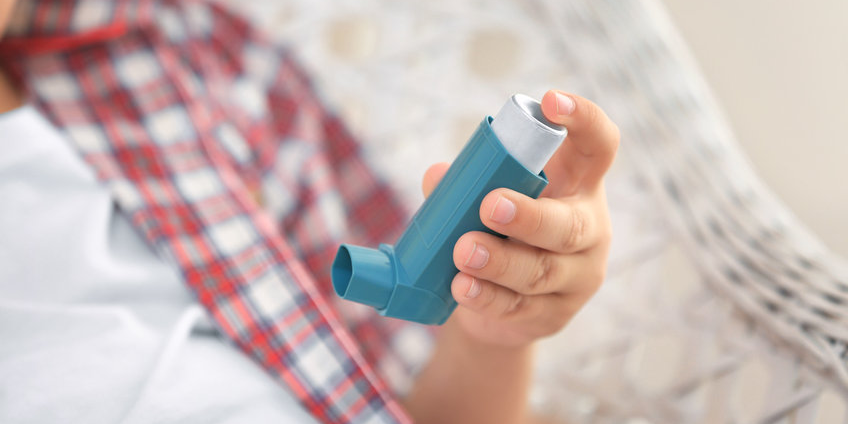
For years, the Asthma and Allergy Foundation of America (AAFA) has declared May National Asthma and Allergy Awareness Month, which offers the perfect opportunity to educate patients, families, caregivers, and health care providers about the unique needs of those living with asthma and allergies.
With asthma, the airways narrow and swell, occasionally producing extra mucus. Asthma can make breathing more difficult and result in coughing, wheezing, and shortness of breath. Considering that asthma is a major noncommunicable disease (NCD) that affects both children and adults, EMS responders must be prepared to reverse asthma attacks and prevent life-threatening respiratory failure as efficiently and thoroughly as possible, at all times.
To mark the awareness month, we’re providing some advice and resources to help EMS responders better understand the unique airway complications suffered by asthmatics and the safest and most effective ways to perform airway management on asthmatic patients.
Airway Complications Caused by Asthma
Most asthma deaths are preventable with the right emergency care. Knowing what signs and symptoms to look for is the first step in identifying asthma and implementing a proactive treatment plan.
- Asthma symptoms, such as coughing, wheezing, shortness of breath, and chest tightness, are caused by inflammation and narrowing of the small airways in the lungs. In addition to inhalant medication, identifying and avoiding asthma triggers can significantly mitigate symptoms for patients. Common triggers include exposure to environmental allergens and irritants like indoor and outdoor air pollution, house dust mites, molds, and any chemicals, fumes, or dust.
- Between 3% and 16% of adults hospitalized for acute asthma develop respiratory failure requiring mechanical ventilation. Unlike respiratory distress, which is less severe, respiratory failure indicates a much more urgent crisis. An asthmatic does not need to experience an asthma attack to be at risk of respiratory failure; conditions that adversely affect breathing, including the flu, COVID-19, pneumonia, and lung injuries, can also elevate the risk.
Symptoms of respiratory failure include:
- Severely altered mental state
- Labored breathing and use of accessory muscles
- Decreased O2 saturation even with O2 or other interventions
- Inability to speak
- Severe cyanosis
- No breathing sounds
- Tachycardia consistently higher than 130 bpm for an adult
Suctioning, Ventilation and Airway Management
The first line of defense against an asthma attack is always a rescue inhaler, followed by medication if the inhaler doesn’t reverse the attack. When medication fails, however, mask ventilation is the next best treatment.
EMS responders must keep in mind that inflammation from asthma can compromise the airway and make intubation incredibly difficult or impossible. For this reason, responders should only intubate after medication has failed or the patient shows signs of severe oxygen deficiency.
Once you’ve determined that ventilation is necessary, follow these steps to perform ventilation safely and efficiently on the patient:
- Practice thorough hygiene measures before, during, and after ventilation.
- Offer reassurance and explain the procedure to the patient, being sure that you receive explicit consent from them before proceeding.
- Sedate the patient so they feel no pain or anxiety during the procedure.
- Suction the patient with the right-sized catheter before ventilation.
- Set the ventilator up with age and size-appropriate settings for volume, breaths per minute, and positive end expiratory pressure.
- Keep the patient’s caregiver informed of the treatment plan every step of the way.
Keep the Right Equipment On-Hand
EMS responders encounter asthmatic patients in a variety of environments (schools, playgrounds, public facilities, and other locations that don’t have wall-mounted suction units), but transporting the patient isn’t always possible or safe. Stocking your kit with the right emergency suction units and medications is vital for tending to asthmatic patients in any setting.
Some essential tools to carry in your kit include personal protective equipment (gloves, eye protection, face shields) and airway equipment (basic adjuncts, such as NPA and OPA, pocket masks, collapsible bag valve devices, chest decompression kits, and advanced airways). Wall-mounted suction is essential in many scenarios, but portable emergency suction is an effective way to treat asthmatic patients wherever you find them, and without transportation or treatment delays.
For help choosing the right equipment, download SSCOR’s free guide, The Ultimate Guide to Purchasing a Portable Emergency Suction Device.
















